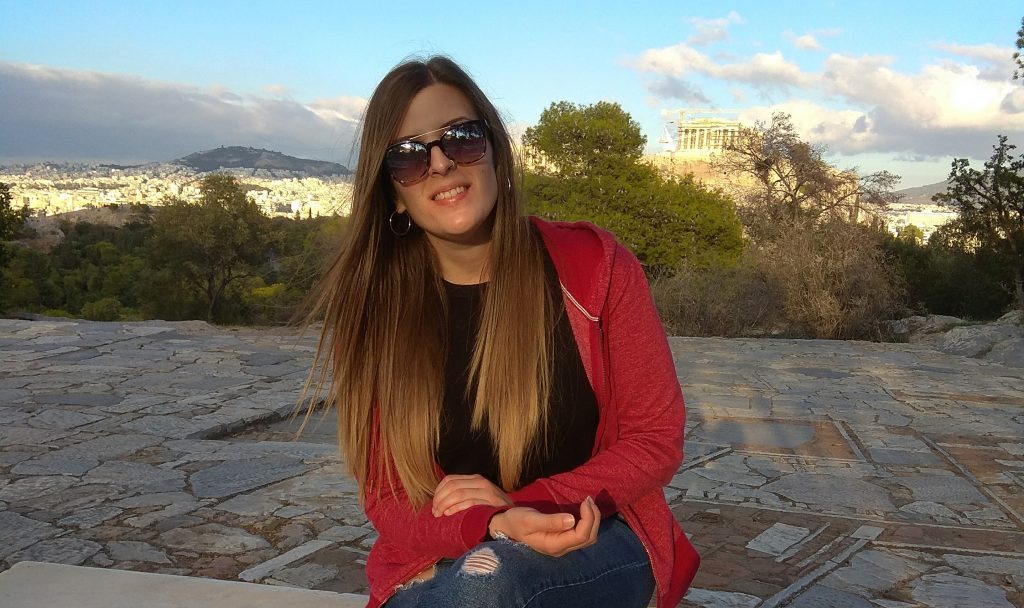
Can you say a few words about yourself?
– I am from Greece and grew up in Rethymno, a charming town on the mid-western side of Crete. Upon finishing high school, I moved to Heraklion to study Physics at the University of Crete. Then I obtained my master’s degree in Environmental Physics and Meteorology, at the Department of Physics, at the University of Athens. During that time, I took advantage of an opportunity to spend three months at the Department of Meteorology at Stockholm University, as an ERASMUS exchange student. These experiences eventually together with my scientific interest to continue environmental research led me to EPFL, where I am currently pursuing my doctoral studies.
Did you choose your profession or did it choose you?
– I deliberately chose my profession, following a path that is driven by my keen interest in cloud physics. Ever since I can remember, I have always been drawn to looking at the sky observing the different shapes and types of clouds. I started searching what are clouds made of, how they form and why they are important. The more I learned, the more excited I became. As a cloud enthusiast, I cannot imagine of a profession that suits me better!
What does LAPI represent?
– LAPI offers unique research opportunities in different scientific topics, covering important aspects related to atmospheric physics and chemistry. Combining modelling tools as well as lab and field experiments, our laboratory is involved in several interdisciplinary and exploratory projects worldwide. I believe that the most fruitful research opportunities are produced at the crossroads between divergent research areas and this is the reason why I am very excited to be part of LAPI.
Can you speak about the projects you are currently working on and other ones in the past?
– The research projects I got involved in during my undergraduate and graduate studies focused on modeling of atmospheric particles and their interactions with clouds, radiation, and their implications for boundary layer processes and climate. The poor understanding of these interactions in large-scale atmospheric models and their importance for predictions of climate motivates me to further invest in this scientific sphere.
Currently my research is focused on the role of secondary ice production in mixed-phase clouds and its climate implications. Among the main objectives is to implement ice multiplication parameterizations in weather prediction and climate models aiming to improve the representation of ice microphysical processes, which is essential for making more accurate climate predictions. As part of my thesis, I am also working on the interpretation of a comprehensive and very interesting dataset from the RACLETS campaign, which focused on orographic mixed-phase clouds in the Swiss Alps. We specifically examine how aerosols and cloud dynamics could potentially affect droplet formation in an Alpine environment. Aerosol-CCN-droplet interactions affect ice crystal riming and other secondary ice processes at action, so RACLETS is an excellent dataset for testing ideas related to the parameterization of secondary ice production processes.
What have been some of your biggest successes?
– The fact that I have been accepted into the EPFL doctoral program and given the opportunity to conduct my research in one of the most scientifically productive European institutions is the biggest academic accomplishment I have experienced up to now. Within the first year of my Ph.D. studies I had the chance to present my research at a scientific conference and start carving out my first scientific research paper. In the meantime, I was delighted to attend an intensive workshop on the WRF model guided by a team of international modeling experts hosted by the US NCAR, which is home to some of the most sophisticated numerical models in the Earth system sciences.
What do you enjoy to do, outside of science and research?
– Here in Lausanne I really enjoy cycling around Lake Geneva (Lac Léman) and hiking. Growing up on an island surrounded by turquoise seas, swimming is definitely one of my favorite activities. I also love doing jigsaw puzzles. Puzzling is about bringing order to chaos, and that’s something challenging and absolutely exciting!
Where is the most interesting place you’ve been?
– Rome, the Eternal City, for its fascinating history and for offering the opportunity to witness ancient, medieval and modern architecture.
A free thought for the end?
– Keep your eyes on the sky, dream big, strive to achieve your goals and smile!